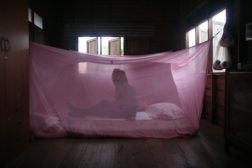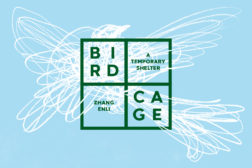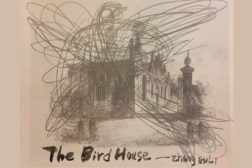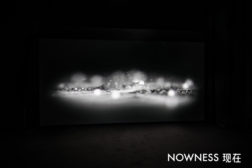


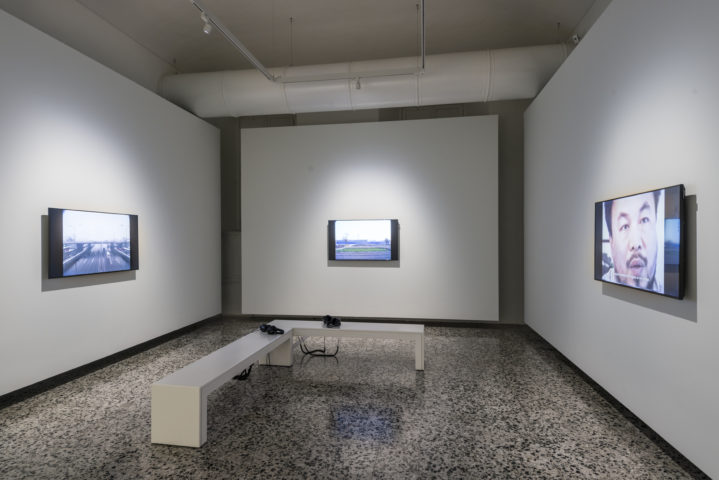

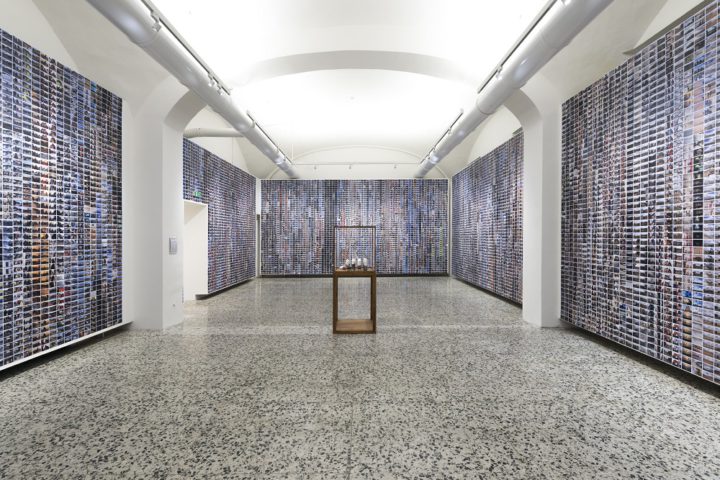

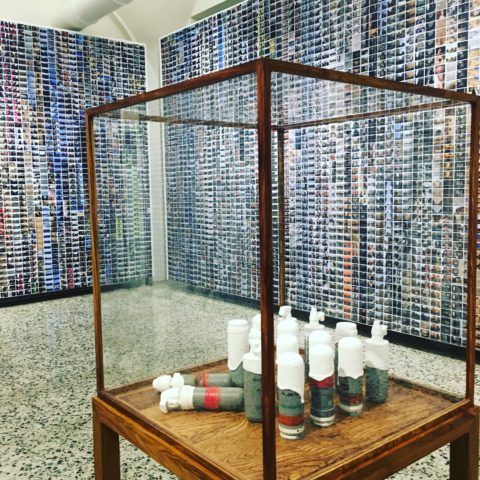

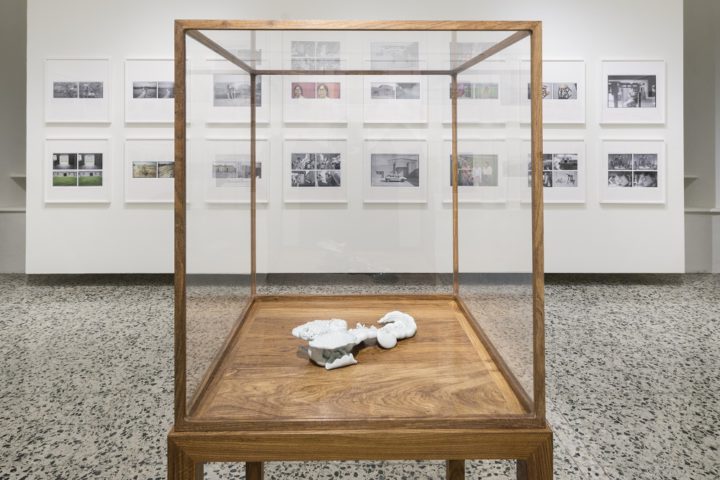
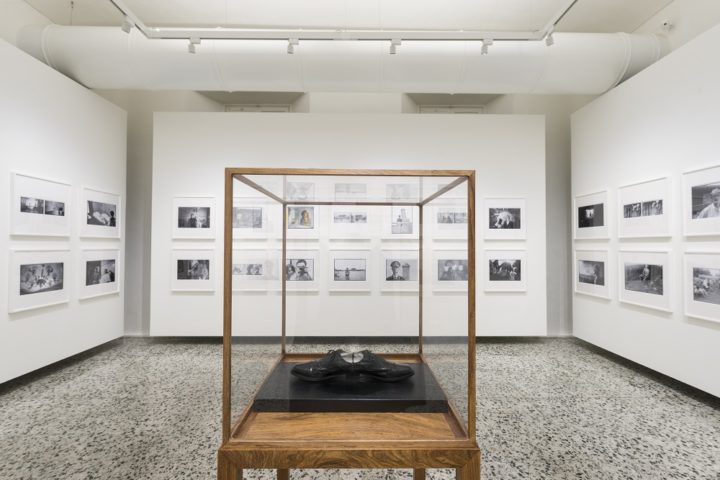
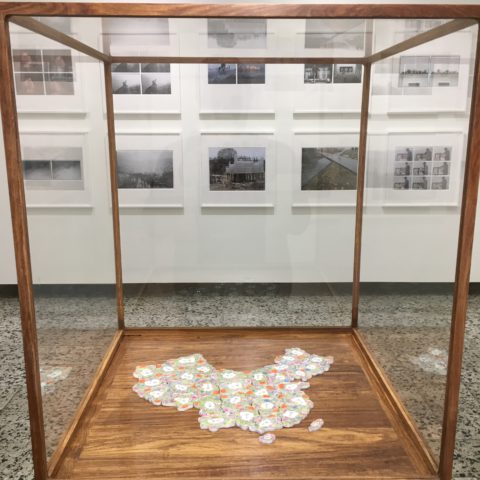

Around Ai Weiwei: Photographs 1983-2016
Duration: October 28 – February 12, 2017
Venue: CAMERA – Centro Italiano per la Fotografia
Via delle Rosine 18, 10123 Torino, Italy
In a world of exhibitions showcasing Ai’s monumental works, the project hosted by CAMERA was conceived to expressly redirect the attention of the public to documentary evidence that circumnavigates the artist’s life, as a testimonial to his fascinating journey as a man and creator.
Partially documenting, partially addressing issues regarding his figure, Around Ai Weiwei highlights chapters of one man’s trajectory. These phases are important to understanding the formation of his profile, as well as to knowing “what” the milieu has transformed him into (rather than “who” he has become).
The autobiographical storyline of the exhibition – illustrated through photographic series and video works – is punctuated with a selection of sculptural artworks that become symbols mirroring the development of Ai’s life over four decades. The artist’s readymades and porcelain works are an expansion on the multilayered abilities and subtleties of Ai.
The show concludes with a complimentary series of documentaries. Profiles and interviews present the process of construction and transformation of the public persona and contemporary icon of Ai. Watch the making of a myth unfold. This collection of documents offers the opportunity to discover a highly mediated figure and how he has become an unstoppable global knight of the dispossessed.
Around Ai Weiwei, 2016, 22’13”
Around Ai Weiwei: Photographs 1983-2016
text by Davide Quadrio and You Mi
From “New York Photographs 1983-1993” to “iPhone Wallpaper”, Around Ai Weiwei: Photographs 1983-2016 examines the artist’s personae over a span of three decades. Understanding shifting geopolitical contexts, the changing of technological conditions in the production of art, and the ever-present transformation from a society of spectacle to a society of performativity, all act as important footnotes to the exhibition. On view at CAMERA is a selection of the extensive array of photographic works by a self-made artist, which dually portray an artist made by his time. The works lend themselves to a double reading: the making and the made.
New York Photographs 1983-1993 gives a glimpse into the coming-of-age of Ai Weiwei as a human being and as an observer with heightened social consciousness. In Daria Menozzi’s documentary Before Ai Weiwei, shot in 1994, we see that upon his return to Beijing the artist had become more articulated in voicing his diagnosis of society and art’s place within it. Ai Weiwei appeared self-conscious and humble when portraying his own identity on camera. Two decades later, Ai Weiwei’s continued efforts towards human rights and freedom of speech make him internationally acclaimed as THE politically engaged Chinese artist (even if he has repeatedly resisted being ethnically branded). Tracing the life and works of the artist, the exhibition Around Ai Weiwei: Photographs 1983-2016 also affords a reflection on the interplay between politics and image making, which has been transformed in the larger context over the years, and has determined our way of viewing the artist himself.
Contrary to his popular reception outside of China, due to successful implementations of state censorship that guard the online public sphere, Ai Weiwei is not widely known amongst common people in his home country. To what extent the vast mass of China can relate to his politically motivated artistic activities and his artistically motivated political activities remains to be seen. Perhaps more interestingly is the fact that, among those who do closely follow his activities, i.e. Chinese intelligentsia, there have been conflicted views about the artist. While some see him as a truly leftist activist, others from the Chinese New Left scene attack Ai Weiwei for applying Western standards on particular—and hence inherently incompatible—Chinese realities. It should be noted that the Chinese New Left is carefully posited in a niche position that is outwardly critical of liberalism, yet sympathetic of an (sometimes Confucianism-inspired, sometimes socialist) alternative form of statecraft. The discussion illustrates an intellectual divide between external criticism, and a more complex, non-power-shy wish for changes from within. It can also be read as a rift between a somewhat reactive form of oppositional politics and a mutated power structure that functions through assimilation.
And yet, the conflicting views are more complex than ideologically driven debates and totalizing claims. This is the moment to distance oneself from the figure of the artists themselves and to enquire into the genealogy of power networks that ultimately construct the artist. The trajectory of Ai Weiwei parallels the very mutation of power structures, reflected in the interplay between his cultural context at home and the rest of the world. His mutation is a global one and in that sense it extends beyond West-East conceptualizations: from a singular hegemony to a myriad of power constructions, with the production of values and images implicitly implicated within. The top-down police state of China, with its multi-leveled hierarchical topology, has conditioned the artist’s social interventions. Such a positioning has resulted in myriad hardships, but has also harnessed him as one of the fiercest spokespersons against central power. Yet with his recent engagements in contexts larger than China’s, Ai Weiwei needs to connect to multiple differences; protecting the disenfranchised of the refugee crisis is a current example in which the artist is no longer bound to one mammoth hierarchy, but to a decentralized network that implicates everyone and everything, without any clear power centers.
Moreover, this decentralized network that is pertinent to our contemporary Internet-based lives, regulates the production of value through symbols and images. Hence the artist’s presence is rendered as part of a flow of images and distribution of sensations. Our traditional understanding of wealth becomes debased as the economy shifts away from production of goods to that which serves imaginations and fulfills social reproduction, because social reproduction has become central to the financial state. Social reproduction has become “a matter of time”—capital invested time realized in images that are then imbibed by the consumer . Or to borrow Derrida’s analysis of the symbolic order: any form of representation can be regarded as an economic exchange and transaction, a measuring and valuing of the symbolic place holder, and hence “the symbolic order itself is an economy of sorts” . What makes these images and the actions they provoke desirable goes almost unnoticed in the flow of affect effectuated by media, which captivates and invokes emotions even before our cognitive registration. The media thus acts as a power source that is useful to the system of advancing capitalism, that is to say, for more exchange, consumption and production. This continuous modulation, variation and intensification of affective response in real time attests to the fact that “bodily affect is mined for value” , forming the strange intimacy between economy and our daily lives.
In our time of the “extreme present,” Ai Weiwei, as the artist, the filmmaker, the mediator, the activist, the opinion leader and many more roles, is always in the public sphere. In the increasingly dominant regime of affect economy, “the circuit from affect to emotion is attached to a circulation of images meant to simulate desire-already-satisfied, demand-already-met, as capital extracts value from affect – around consumer confidence, political fears, etc., such that the difference between commodification and labor, production and reproduction, are collapsed in the modulation of the capacity to circulate affect.” Ai Weiwei is no stranger to this new social norm, having netted hundreds of thousands of followers on social media platforms. In the seemingly hyper-political online sphere, the will for partisan participation from the swarms of Internet users is determined by the matriculate matrix of images and symbols; imageries that have the ability to shift the timing and location of any political subjectivity. The result is that one is only aware of one’s desire once they have already been satisfied, so much so that “interaction”—what was so central in negotiation-based politics—is overcome by “inter-passivity”. Inter-passive users derive profound satisfaction from allying themselves with controversial figures in the online community by virtue of “liking”.
We are living in a time in which Ai Weiwei paradoxically battles the contemporary problems we face, while partially embodying them. There is no longer a kind of “art” that is separable from its users, viewers, and promoters. The mechanism that takes into account the attention and affectively modulated responses invested on it makes up the core of creativity’s unique being. The prospect is less than hopeful: when all power and control is decentralized, then power becomes the right to the representation of power, and sovereignty becomes the right to the naming of sovereignty. In this economy, the resistance mounted against a power structure is quickly consumed by its extension into images. The hyper-presence of the artist manifests given the networked infrastructure and its associated economies, not least in the form of objectification of political contents by the art market.
The artist is hyper-present.
The exhibition Around AWW is organized and promoted in collaboration with the Palazzo Strozzi Foundation as part of their recently opened major Florentine show.
